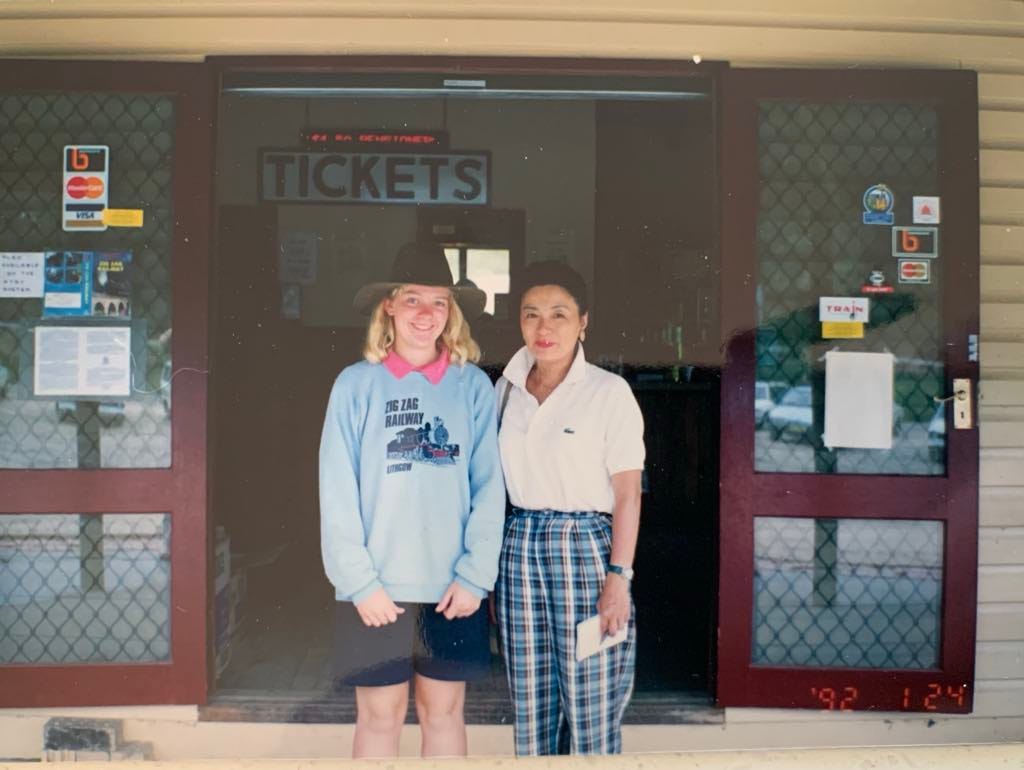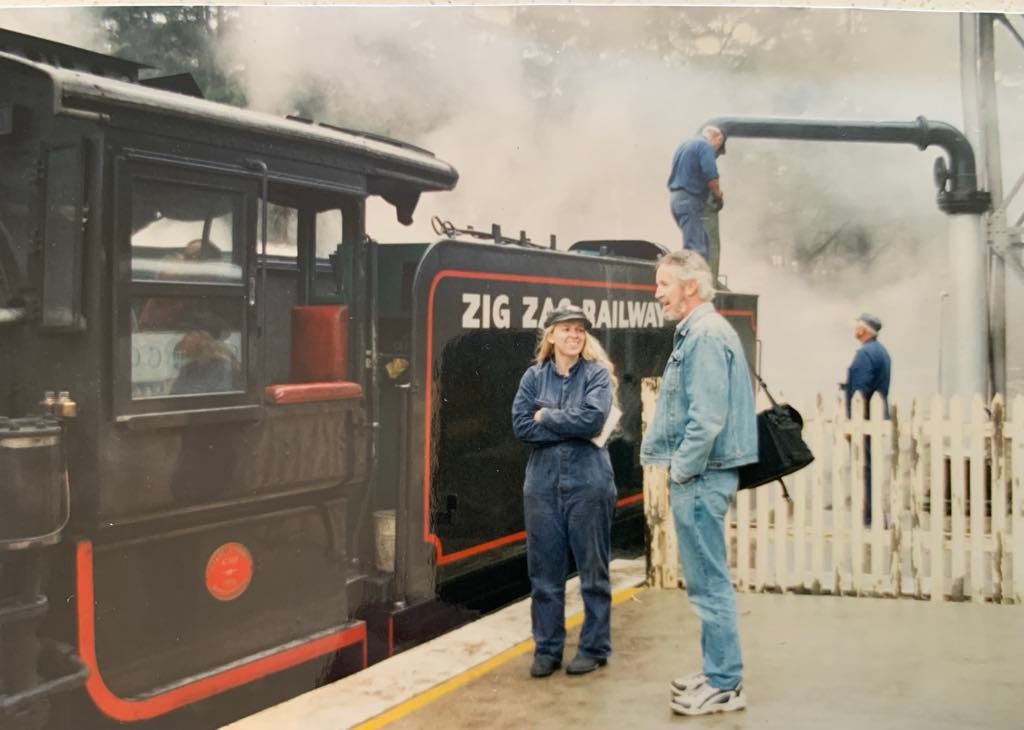Simone de Beuzeville - Behind the Regulator
Behind the Throttle: Edition 2, Installment 7
“They’re all just made of metal, we can fix them”.
A first on Behind the Throttle this week as we finally expand our horizons beyond the confines of the United States, something I had hoped to do from the beginning. Railroading is a global industry, and the railroaders across the world all have a great story to share. Today we meet a woman who found her happy place in the cab of a locomotive, and now spends her days work in that same place or helping others get there. Behind the Throttle is proud to spotlight The Picnic Train director, One Rail Australia driver, and mother of a railroad family: Simone De Beuzeville - Behind The Regulator.
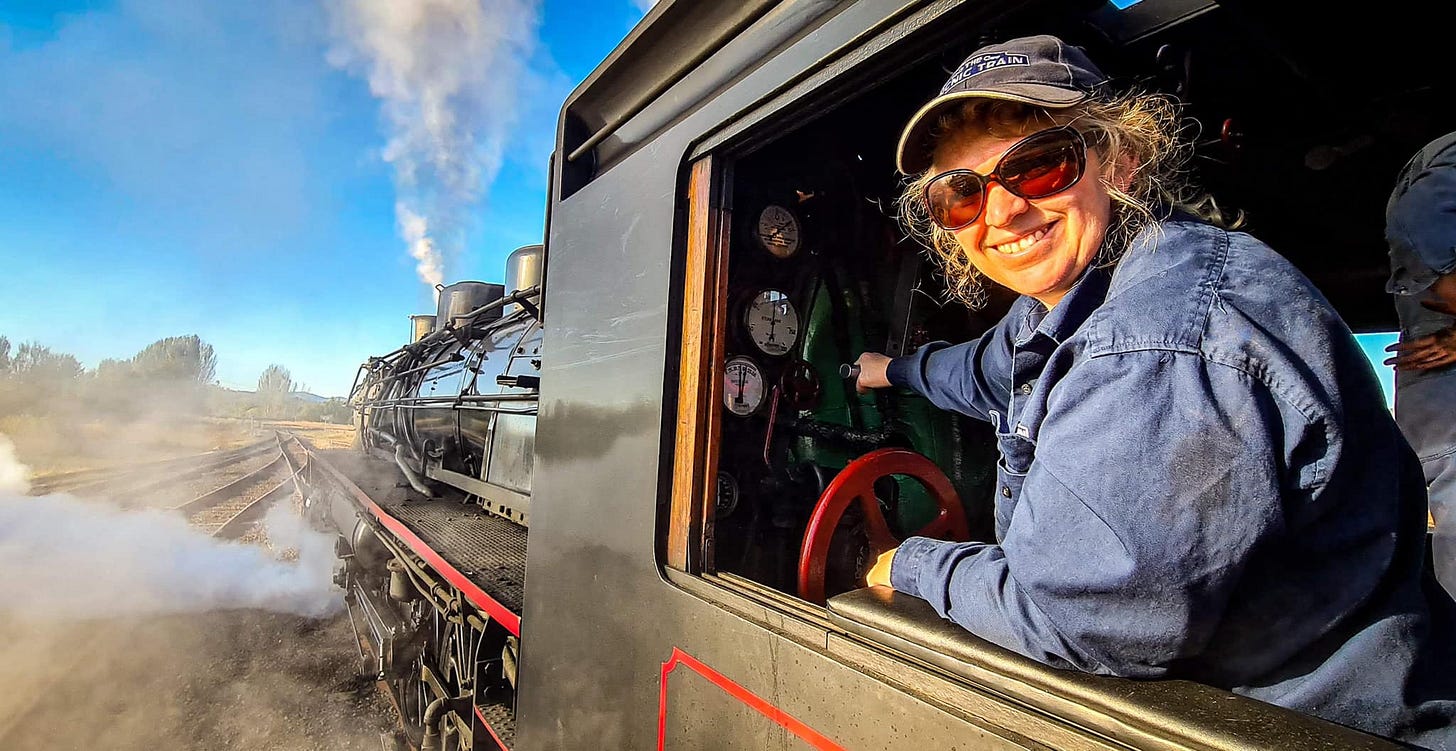
Simone’s early years were spent in her family home near Lithgow, New South Wales. Chosen for it’s opportune location in the foothills of Sydney, the home was also nearby a heritage rail outfit - The Zig Zag Railway. Simone has her earliest memories of running to the train tracks every time she heard a whistle, and can distinctly recall the smell of the leather seats within the compartments of the carriages. Her parents, though not railroad enthusiasts, were keen on the heritage railway and her dad often assisted in upkeep with the railway’s infrastructure. Simone’s dad’s visits to the railway helped cement her image around the group, but where she really became a familiar face was asking to ride in the cab of the steam engine for the runaround moves at the end of the line. Her inquisitive attitude and sweet smile landed her in the cab often, and soon her ask shifted from riding along to “can I drive the engine?” - a request that was first fulfilled when she was just 12 years old! At this point, Simone had the train bug for good, and began to volunteer with the group after school. Her early teenage years were spent as a guard onboard the trains (the Australian equivalent of a trainman or brakeman), and at 16 she moved into the cab of the locomotive, eager to work the scoop and continue the tradition of carrying trains up the rigid switchbacks of the Zig Zag Railway on her back. Simone was as driven as could be, and took in as much information as she could as she learned about the wide world of railways and steam engines at a young age. She even had a little notebook full of notes and lessons, that she would fill while following around the experienced volunteers like a baby duckling -and She still has this notebook somewhere!
Simone’s enthusiasm was met with opportunity at every junction. The volunteers were happy to share their knowledge, and Simone was happy to receive it. She recalls being one of the only women around the site, but frankly never even considering her gender as a reason to be treated differently: “No one ever mentioned that I was a a girl”. Embraced by the whole team at the Zig Zag, Simone had the pleasure of learning the ways of steam railroading from the people that worked on these machines in service, as steam locomotives maintained their positions on the high iron in Australia well into the 1970s and 1980s before diesel and electric locomotives took the reigns. Specifically, Simone remembers a gentleman named Alan Gabbatt - a legend of steam down under - for his patience, his kindhearted demeanor, and surplus of knowledge and experience. She and Alan would sit down together weekly and talk about what she had learned her last few shifts, and Alan would explore the ideas more and give her more information to chew on, all while she feverishly penned into her little notebook. No more than a year of being a student, Simone was promoted to a fireman on the Zig Zag and worked with their various locomotives for many years. At 20 years old, Simone was offered a chance to become a driver (for my American audience, “engineer”), and jumped at the opportunity. She was promoted by 21, with many thanks to Alan and the rest of her mentors, and sat behind the regulator (again, for my American audience, “throttle”), at the Zig Zag for years to come. Simone had climbed the ladder and was proud of herself for achieving the dream that first conspired when she was just a little girl listening for a wayward whistle, and was beyond grateful for a team that made her feel like she belonged.
For the next 15 years, Simone spent her workdays as a primary school teacher and her weekends on the footplate. She had mothered her five kids in the meantime, and had settled into a life of coal cinders and children’s books. Though, a big change was on the horizon when the Zig Zag ceased operations as the railway needed to make critical safety upgrades in 2012. The closure was anticipated to be temporary, though bushfires, floods, and monetary restrictions seemed to indicate that the railway would be silent for some time. Recognizing that she needed a railroad fix in her life past the Zig Zag’s closure, Simone opted to begin looking outward for other opportunities. Her stage of life made it difficult to produce large change, but Simone was determined to find ways for her to work in her industry of passion while supporting her family. She began working with the Powerhouse Museum, an industrial history museum, and began with the Lachlan Valley Railway as a volunteer. The Zig Zag was an isolated operation that did not connect to the mainline network of railways in Australia, but Simone’s new group offered the opportunity to work excursions on mainlines that spanned the whole state of New South Wales. In order to operate trains on the mainlines though, Simone would need a certification from a licensed operator, or an established railway that trains employees to the federal standard to drive on the state-owned mainlines. Simone was determined though, and despite the changes to her life she would have to make, she accepted the challenge and found a freight railway looking for a new class of drivers. Simone hired on with Freightliner, and went from narrow gauge steam locomotives hauling passenger carriages seen on the Zig Zag, to driving several thousand ton freight trains with electronically controlled pneumatic (ECP) brakes and modern diesel locomotives. The change in equipment was an adjustment, but the greatest challenge was having to reestablish herself as a railway worker, and Simone felt she had to earn what she had been doing for several years. Similarly, her new coworkers were not as welcoming to a woman in the cab of a locomotive as the folks from the Zig Zag. However, Simone let her experience and her skills as a driver do the talking and she didn’t need much time to prove herself and earn the mainline certification that brought her back into the cab of steam locomotives, now at much higher speeds.

Volunteering with the Lachlan Valley and working more throughout the railway industry led Simone down a fulfilling and stimulating career path, all while she worked to maintain a healthy balance of work and family life. Through her own experiences of working in the historic railway world, Simone had now established a set of values and principles that she carried with her and brought to every train that she worked. As Simone met more people that shared that same set of values, she began thinking about having her own organization that would foster involvement with communities of all ages, and work specifically to get younger folks involved with steam trains. Her now-husband, Paul Stapleton, was one of those like-minded train enthusiasts she met through work, and in conjunction with Paul’s freight railway - Sydney Rail Services - Simone and a village of volunteers began hosting mainline excursions with a 2-8-2 D59 class locomotive, number 5917. The first few trips were rather well-received, and volunteers began pouring in as some searched for an organization with a community feel and opportunities to grow; Many passengers would also become volunteers in later trips, seeing the joy and family-like atmosphere among the train crew. Through their first few excursions, Simone worked to cultivate a climate of inviting crew that fostered opportunities for everyone to learn, no matter their background.
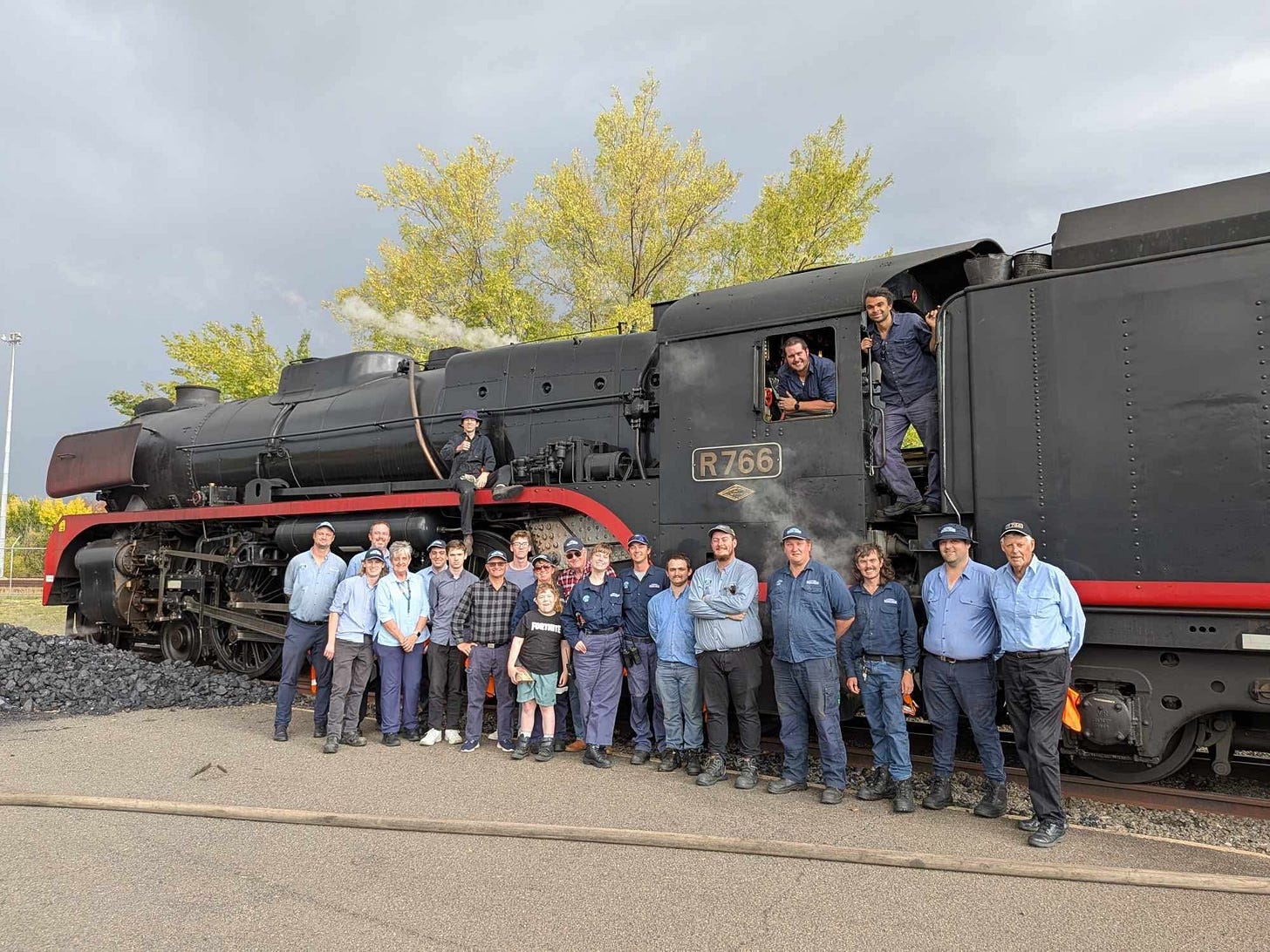
The first few excursions hosted by Sydney Rail Services followed the eastern coast of Australia, going from the NSW Capital city of Sydney south to the coastal town of Kiama. This excursion run became increasingly popular, and the crew noticed that many passengers would bring a picnic lunch and enjoy it on the train. Hence the name “The Picnic Train” was born, and the not-for-profit organization was founded officially in 2020, with Simone being the executive director. The mission of the Picnic Train is inspired by the idea of catching a new generation, teaching them the ways, and giving them the reins once they feel ready. This translates to maintaining the locomotives, planning the excursions, and actually operating the trains. The average age of a Picnic Train volunteer is well below what you might expect, a figure Simone and her team are quite proud of. Similarly, the Picnic Train has become a family affair, both literally and metaphorically; Simone and Paul married a short while after being introduced and began running excursions together, and Simone’s children have all gotten the train bug. Her daughter, now 21 years young, is even a qualified train driver and can often be seen slinging coal or in the seat for various excursions. She’s even trained a handful of other volunteers, many of whom are women who may have never seem themselves in such a role before: “It’s great to see women training other women”, Simone told me proudly. Many of her old colleagues from the Zig Zag too have drifted down to the Picnic Train and gotten involved with the newfound group, as they’ve taken their trains around Australia. Being able to operate on stretches of the NSW Mainline across the state has allowed the Picnic Train to go beyond their normal reaches and share the joy of steam with a huge population, and overall work to support their mission of providing a space for everyone to appreciate trains.

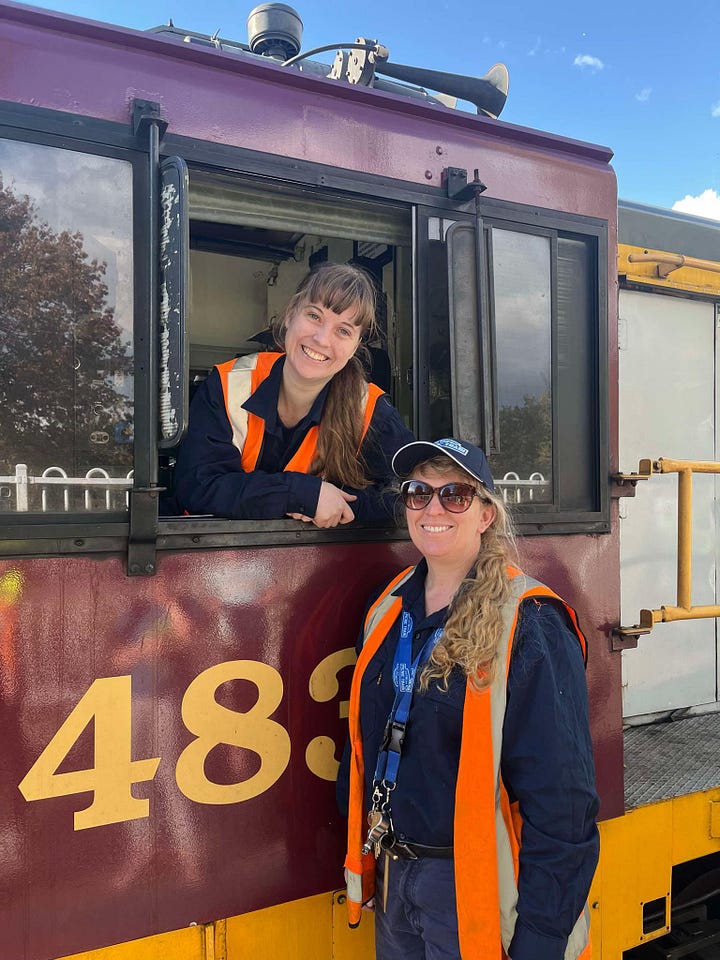
The Picnic Train was founded with a sort of blind ambition to keep their fleet moving and keep the engines steaming for those next to come. The “can-do” attitude was cemented by Simone’s upbringing at Zig Zag, where the locomotives were constantly being worked to ensure they ran for the next day’s excursions. She remembers that many of the people that taught her the basics of steam all understood the little parts that held the engine together, and could describe what it took to keep them going: “They’re all just made of metal, we can fix them”. Australian locomotives in general are a hodgepodge of various other country's steam technologies, with many locomotives and designs imported from the United States and England. With so many different sets of standards for locomotives, Simone has taken to traveling and learning about how other historic outfits maintain their engines in a form she calls “professional espionage”. She remembers specifically taking a trip to the East Broad Top in Pennsylvania, and seeing the assembly on their locomotives (distant cousins of the Picnic Train 5917) and getting an understanding of how they worked to maintain, fabricate, and replace the parts that would wear over regular operations: “We can take a bit away from every other railway that we visit”. Learning from other organizations and sharing that knowledge whenever possible is a core part of Simone’s mantra of continuing to educate oneself and compare thoughts, all while passing it forward and growing an understanding.

Simone has worked hard to push the idea that this is an industry that everyone can be involved in, and especially spreads the message to the young girls that ride the train: “If you knock out half the population you’ll lose half your workforce”. She is proud to have such a diverse team that is always happy to contribute time to a cause they care about, and hopes that the Picnic Train continues to be a space where people can learn and grow into accomplished railway workers. From her own experiences behind the regulator, to her experiences now overseeing a large heritage operation with a few thousand passengers onboard a train, Simone hopes that the future of historic railroading continues to be a place of positive experiences for passengers and crew alike.
Thank you for reading another edition of Behind the Throttle, and thank you to Simone for coming on! Tune in next time for a look into the life of a theater junkie gone mainline engineer, gone steam engineer, gone Rail Events Incorporated director of productions with Mike May. Until then, I’m Max Harris, and I’ll see you down the line.


